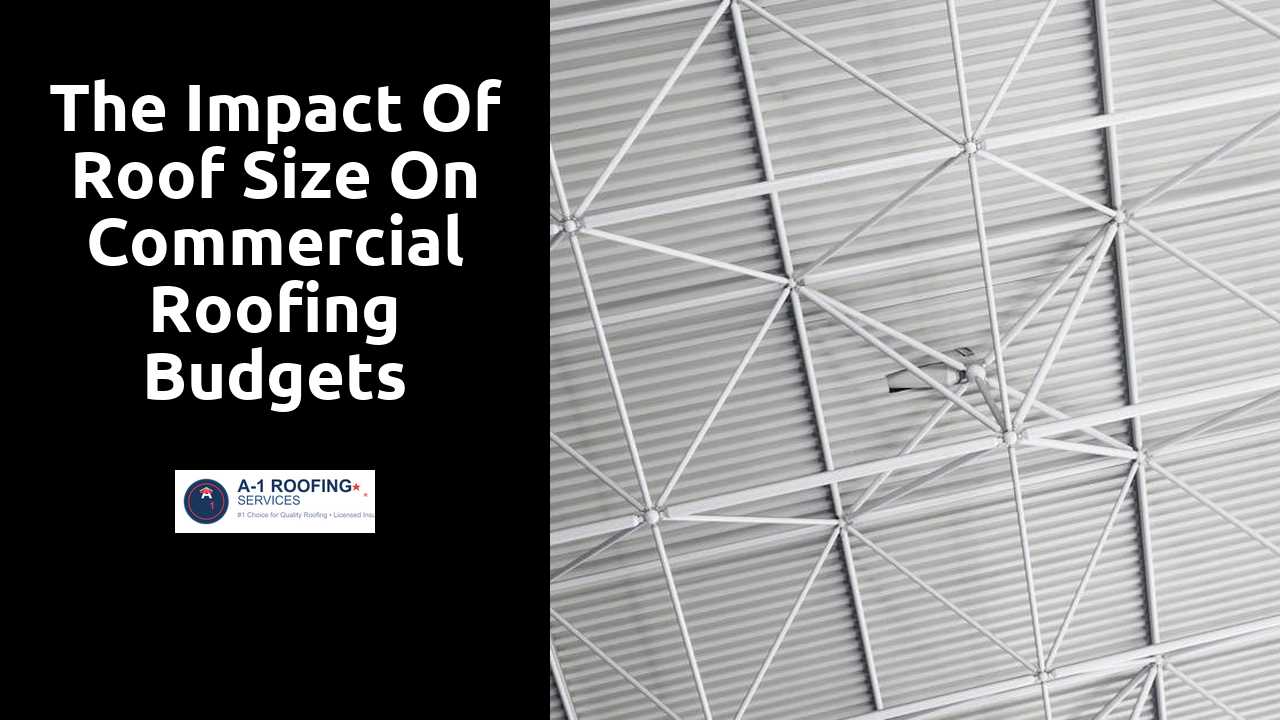
The Impact of Roof Size on Commercial Roofing Budgets
Table Of Contents
Structural Considerations for Larger Roofs
Larger roofs present unique structural challenges that must be addressed during planning and construction. Increased surface area requires careful consideration of materials, as well as the design’s resilience against environmental factors such as wind and snow loads. Building codes often mandate enhanced structural integrity for roofs that exceed standard dimensions. Engaging with qualified engineers is essential to ensure that load-bearing capacity meets or exceeds regulatory requirements.
In addition to load-bearing needs, larger roofs can impact the underlying framework of the building. The overall weight distribution must be carefully analyzed to prevent potential damage or failure. Reinforced beams and trusses may be necessary to support the extended roof size effectively. Thorough assessments during the design phase can mitigate risks and contribute to safer commercial structures. Such considerations ultimately enhance the longevity and stability of the roofing system.
Discover more here.
Load-Bearing Capacity and Engineering Requirements
When designing commercial roofs, especially larger structures, load-bearing capacity becomes a critical focus. Engineers must assess the materials used and the overall strength of the building's framework to ensure that it can support the additional weight. Factors such as the type of roofing system, environmental loads like snow or wind, and potential future modifications need careful consideration. Structural integrity plays a vital role in preventing long-term issues that can arise from inadequate support systems.
Regulatory codes and standards govern the engineering requirements for commercial roofs. Compliance with these regulations is necessary to achieve safety and durability. Engineers often conduct detailed calculations and simulations to determine the optimal design parameters that address both current and future demands. This proactive approach mitigates risks associated with structural failure and enhances the building's operational lifespan while providing peace of mind to owners and occupants alike.
Energy Efficiency and Roof Size
The size of a roof plays a vital role in the overall energy efficiency of a commercial building. Larger roofs often require more materials, which can impact insulation effectiveness and thermal performance. Inadequate insulation may lead to increased energy consumption for heating and cooling, causing higher utility bills. Proper design and material choices can optimize energy performance, ultimately influencing long-term operating costs.
Additionally, roof size affects the potential for incorporating energy-efficient technologies. Larger surfaces may accommodate solar panels or green roofs, which can significantly reduce reliance on conventional energy sources. The increased area allows for greater solar exposure, enhancing the effectiveness of photovoltaic systems. These considerations lead to a comprehensive approach toward energy efficiency, making size a key factor in long-term sustainability and cost management.
Impact on Heating and Cooling Expenses
The size of a commercial roof plays a crucial role in determining the efficiency of a building's heating and cooling systems. A larger roof often leads to increased surface area exposed to the sun, which can raise indoor temperatures during summer months. This heightened heat absorption may require additional energy expenditure to cool the building effectively, resulting in higher utility bills. Conversely, during the winter, expansive roofs can contribute to greater heat loss, necessitating more energy for heating to maintain comfortable indoor conditions.
Investing in energy-efficient roof materials and design can mitigate these costs considerably. Reflective roofing options can help reduce heat absorption during hot months, leading to lower cooling requirements. Proper insulation techniques are essential to minimize heat loss in winter. As a result, organizations can benefit from long-term savings on heating and cooling expenses, influencing the overall budget allocated for commercial roofing. Making informed choices about roof size and materials can significantly impact financial performance over time.
Long-Term Investment and Roof Size
Evaluating the long-term investment potential of a commercial property often involves a careful analysis of roof size. Larger roofs usually imply higher material and installation costs, but they can also feature more extensive systems, such as solar panels or extensive green roofs. These additions may enhance the building’s overall value and appeal, making it a desirable option for future buyers.
Marketability is closely tied to roof size and its associated features. Properties with larger roofs can provide attractive opportunities for energy-efficient technologies, which are increasingly important to environmentally conscious buyers. This adaptability can ultimately lead to higher resale values, as potential buyers frequently emphasize the importance of long-term savings and sustainability in their purchasing decisions.
Resale Value and Marketability
The dimensions of a commercial roof can significantly influence the property's resale value and market appeal. Prospective buyers often assess the roof size in relation to the building's overall aesthetics and functionality. A larger roof can provide potential for expansion or additional equipment, making the property more attractive to companies looking for usability and flexibility. Key features like unique architectural elements or a distinctive design can enhance visual appeal, thereby increasing marketability.
Moreover, the size of the roof can also play a role in appealing to environmentally conscious buyers. Larger roofs allow for the installation of energy-efficient solutions such as solar panels, which can be a compelling selling point. Properties that can demonstrate sustainable practices typically command higher prices in competitive markets. Ultimately, commercial properties with well-planned and adequately sized roofs not only enhance suitability for tenants but also bolster long-term investment potential.
Related Links
Hidden Costs to Consider in Commercial Roofing ContractsKey Components Influencing Commercial Roofing Pricing